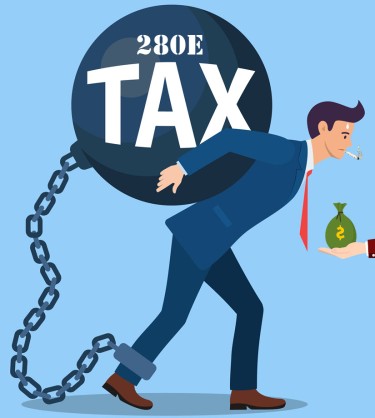
The U.S. Census Bureau recently unveiled its inaugural report on state-level marijuana tax revenue data, marking a significant milestone in its approach to the cannabis industry. This report follows a comprehensive survey of all state agencies from July 2021. The data, spanning 18 months until the close of 2022, reveals that states generated over $5.7 billion from licensed cannabis sales.
This report launch signifies a notable shift within specific federal government segments, recognizing the cannabis industry as a legitimate economic sector. The Census Bureau’s initial commitment to gather marijuana tax information for its quarterly state and local government tax revenue summaries was announced in January 2021. Additionally, the bureau is encouraging states to incorporate cannabis revenue data into their annual reports.
The first release of this quarterly data occurred late last month, coinciding with the bureau’s separate commitment to enhance its survey of American businesses with a specific focus on marijuana-related economic activities. This proactive approach demonstrates a growing recognition of the cannabis industry’s significance in the broader economy.
The recent introduction of enhanced tracking and reporting initiatives, emerging almost a decade after the inception of adult-use cannabis sales in the United States, demonstrates an increasing federal government willingness to recognize the substantial annual inflow of billions of dollars into state treasuries due to state-level marijuana legalization, even in the face of federal illegality.
State-Level Cannabis Revenue Highlights
The cumulative figures from various U.S. states reflect the scale of individual state markets and the duration they have been engaged in this industry. To illustrate, Washington state and Colorado, the pioneering states in nonmedical marijuana legalization, amassed the second and third-largest tax revenues, respectively, with $818.5 million and $648.1 million during the specified period.
In contrast, California’s expansive market generated an impressive $1.4 billion in sales tax revenue over a year and a half. New York, where approximately two dozen retailers have opened statewide since sales began in December 2022, reported a much more modest $27.9 million in revenue.
The Census data encompasses sales from both the medical and adult-use markets and does not distinguish between the two in terms of revenue.
Challenges and Ambiguities in Reporting
The newly released data results from a comprehensive survey of all state government agencies, as indicated by the bureau. Although it initially refers to the revenue as “quarterly cannabis excise sales tax collections,” it later clarifies that “taxes” is used broadly.
The Census Bureau states that for this dataset, the concept of ‘taxes’ includes all compulsory contributions imposed by a government for public purposes. Additionally, the definition of tax revenue extends to include penalty and interest receipts related to government income but excludes protested amounts.
The Census Bureau has established two distinct tax codes for reporting marijuana revenue to states—one for taxes related to cannabis transactions and another for business license fees. The new report does not specify whether the totals encompass sales tax figures exclusively or if they include revenue from both categories. A request for clarification made on Monday to a Census spokesperson remained unanswered.
The agency points out that its figures might not perfectly align with data reported by states, primarily due to potential differences in the definition of “state government.” The Census Bureau’s definition encompasses the executive, legislative, and judicial branches of a state and includes various agencies, institutions, commissions, and public authorities.
This likely implies that tax revenue retained by city and county governments is incorporated within the state-level numbers, as state officials typically collect these funds before being distributed to municipalities.
Moreover, the reported data features some distinctive date conventions. As the Census methodology section explains, “cannabis excise sales taxes reported for a particular quarter generally pertain to taxes collected on sales made during the preceding quarter (e.g., data released in September 2023 will encompass sales from the quarter ending June 30, 2023).”
Cannabis Industry Advocacy and Future Reform
While representatives from the marijuana industry have welcomed the federal acknowledgment of the cannabis sector’s economic contribution, they emphasize the need for broader changes, including tax law reforms and addressing ongoing criminalization.
Aaron Smith, the Executive Director of the National Cannabis Industry Association, expressed that the data underscores the positive impact of legal cannabis markets on their communities. However, we are still far from realizing our full potential in replacing criminal markets with tax-paying, regulated businesses.
It’s high time for lawmakers to take action to enhance conditions for the industry, enabling it to make an even more positive impact. Reforming outdated banking regulations and 280E would immediately boost state-based markets, increasing tax revenue. Ultimately, federal descheduling is required to fully unleash the industry’s economic potential.
Kaliko Castille, the President of the Minority Cannabis Business Association, affirmed that the Census Bureau’s step underscores the culmination of decades of advocacy, bringing the cannabis industry into the mainstream of the American economy. This signifies that the progress made will not be easily reversed.
However, he also highlighted the “irony” of the federal government upholding the 280E provision, which denies marijuana operators the ability to write off business expenses on their taxes, a privilege available to operators in other industries.
He added that when seeking to change laws, having data to substantiate your case is one of the most powerful tools. With the Census Bureau’s tracking of this data, advocates now possess official federal data to underscore the economic impact of the cannabis industry. Our industry not only employs hundreds of thousands of people across legal states but now has concrete evidence of generating billions in tax revenue.”
David Culver, the Senior Vice President of Public Affairs for the U.S. Cannabis Council, expressed the group’s excitement about the Census Bureau’s efforts to collect and analyze data from the expanding number of state cannabis markets nationwide.
The President, emphasizing the fiscal wisdom of legalizing and regulating cannabis, views the Census Bureau’s analysis as a positive sign of the federal government’s evolving stance under President Biden. However, recent Census data reveals an overall decline in national marijuana tax revenue.
While the second quarter of 2022 peaked at $839.6 million, there was a drop between the third quarter of 2021 ($772.1 million) and the second quarter of 2023 ($606.5 million). However, the current report excludes most 2023 sales.
STATE TAX REVENUES FROM CANNABIS, READ ON…
HOW MUCH CAN A STATE EXPECT FROM CANNABIS TAXES IN A YEAR?
- SEO Powered Content & PR Distribution. Get Amplified Today.
- PlatoData.Network Vertical Generative Ai. Empower Yourself. Access Here.
- PlatoAiStream. Web3 Intelligence. Knowledge Amplified. Access Here.
- PlatoESG. Carbon, CleanTech, Energy, Environment, Solar, Waste Management. Access Here.
- PlatoHealth. Biotech and Clinical Trials Intelligence. Access Here.
- Source: http://cannabis.net/blog/news/5700000000-in-just-18-months-states-hit-the-jackpot-collecting-marijuana-tax-revenue




